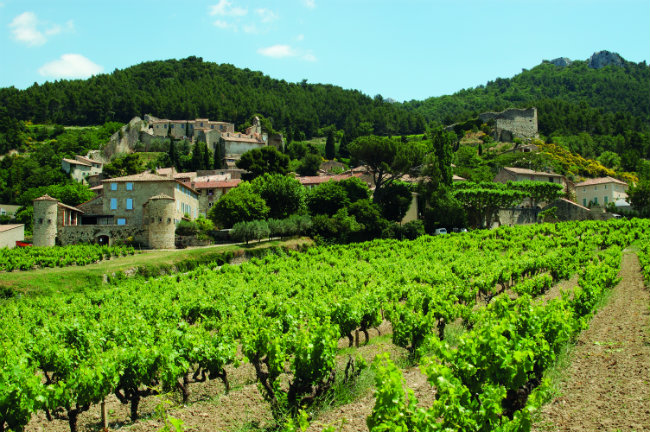- 'Chapoutier makes no bones about the fact that he prefers his 1996 Cote Roties to his 1995s. Wealthy readers with access to Chapoutier's wines will have fun determining whether the 1995 or 1996 Cote Rotie La Mordoree is the superior wine. Both are terrific examples of Cote Rotie with 20-25 years of evolution. Chapoutier prefers the 1996.
- The terroir of Cote Rotie is quite unique. The most famous vineyards of Cote Rotie are located on two hills, known collectively as Cote Blonde and Cote Brune. You can actually see the differences in the soils when you look at both hills. The soil of Cote Brune is darker in color, due to the schist, mica and iron oxide in the terroir.


- The vineyard
- The Wines
- Our Winemakers
- Lifestyle
- News & In the word of ...
As Cote Rotie is a famous vineyard of France (as other appellations like Condrieu, Saint Joseph or Hermitage) located at only 30 minutes away from Lyon, you have to spend some time in a winery to meet local winemakers. You will find on Rue des Vignerons a list of wineries open to public in this wine area. The single-vineyard Les Grandes Places bottling sees 50 percent new oak and contains no Viognier. It offers wild berry, briar and spice flavors with solid structure and bouncy acidity. The La Landonne bottling, from older vines in the parcel, is aged in 100 percent new oak and has no Viognier.
NavigationIn Côte-Rôtie, the bedrock is filled with cracks from which the vines' roots draw water and other nutrients. The difference between the Côte brune and the Côte blonde is due to the geological origin of this substrate.
To the south of the appellation, the Côte blonde's parcels lie atop a substrate composed primarily of gneiss (and composite gneiss to the far south). Erosion created siliceous soils, light in colour, often with increased calcification due to the loess coating of the plateau. On the Côte blonde, and in similar locations, the clay soil or 'arzel' that results from erosion to this substrate is extremely crumbly and unstable. They cannot be cultivated without being held in place by a series of dry stone walls known locally as 'cheys'.
To the north of the appellation, the Côte brune's parcels lie atop a substrate composed of mica-schist. When these rocks degrade, they form less siliceous soils with a higher clay content, richer in iron and dark in colour. On the hillsides of the Côte brune or similar areas, there is more clay and therefore greater stability. The hillside is carved into narrow terraces, or 'chaillées', forming a type of stairway that secures the vines on its relatively flat steps.

- The vineyard
- The Wines
- Our Winemakers
- Lifestyle
- News & In the word of ...
As Cote Rotie is a famous vineyard of France (as other appellations like Condrieu, Saint Joseph or Hermitage) located at only 30 minutes away from Lyon, you have to spend some time in a winery to meet local winemakers. You will find on Rue des Vignerons a list of wineries open to public in this wine area. The single-vineyard Les Grandes Places bottling sees 50 percent new oak and contains no Viognier. It offers wild berry, briar and spice flavors with solid structure and bouncy acidity. The La Landonne bottling, from older vines in the parcel, is aged in 100 percent new oak and has no Viognier.
NavigationIn Côte-Rôtie, the bedrock is filled with cracks from which the vines' roots draw water and other nutrients. The difference between the Côte brune and the Côte blonde is due to the geological origin of this substrate.
To the south of the appellation, the Côte blonde's parcels lie atop a substrate composed primarily of gneiss (and composite gneiss to the far south). Erosion created siliceous soils, light in colour, often with increased calcification due to the loess coating of the plateau. On the Côte blonde, and in similar locations, the clay soil or 'arzel' that results from erosion to this substrate is extremely crumbly and unstable. They cannot be cultivated without being held in place by a series of dry stone walls known locally as 'cheys'.
To the north of the appellation, the Côte brune's parcels lie atop a substrate composed of mica-schist. When these rocks degrade, they form less siliceous soils with a higher clay content, richer in iron and dark in colour. On the hillsides of the Côte brune or similar areas, there is more clay and therefore greater stability. The hillside is carved into narrow terraces, or 'chaillées', forming a type of stairway that secures the vines on its relatively flat steps.
Blonde or brune, the chemical composition of these rocks is quite similar. Their distribution can be explained by the way that they were formed some 300-350 million years ago: the pressure and temperatures were higher in the south of the appellation than to the north.
The planted parcels (a mixture of Syrah and Viognier vines) meet more frequently on the Côte blonde than on the Côte brune.
Cote Rotie Vineyard Map
- The vineyard
- The Wines
- Our Winemakers
- Lifestyle
- News & In the word of ...
The legend of the 'Côte brune' and the 'Côte blonde'
Cote Rotie Vineyard Map
It is told that Lord Maugiron, who owned the Côte-Rôtie in the 16th century, divided his estate between his two daughters so that they would fetch a good husband. One had hair that was golden like the wheat fields... the other had hair that was a dark, dark brown. The wines from the two terroirs accompanied the first turkeys ever served in France, at the Chateau d'Ampuis in 1553.
Cote Rotie Vineyard Map Pdf
Learn more about the geology of the Côte-Rôtie...
